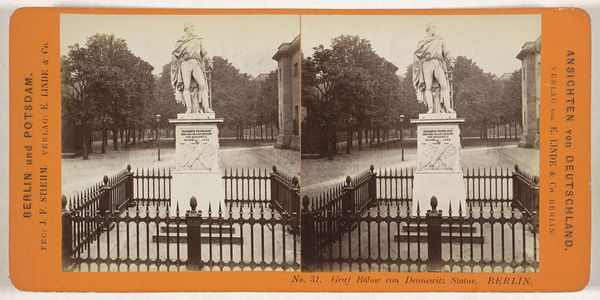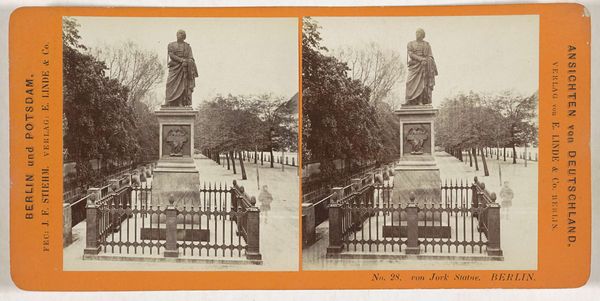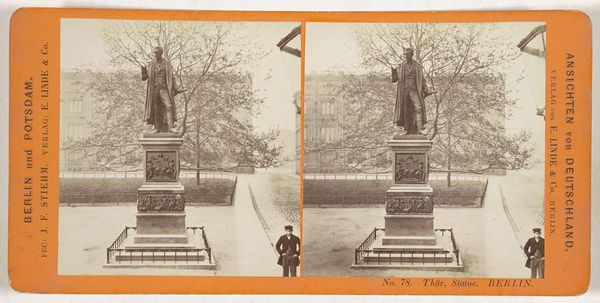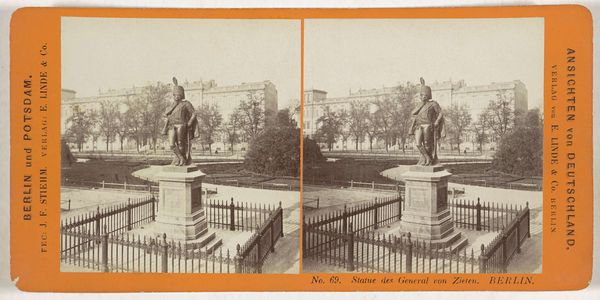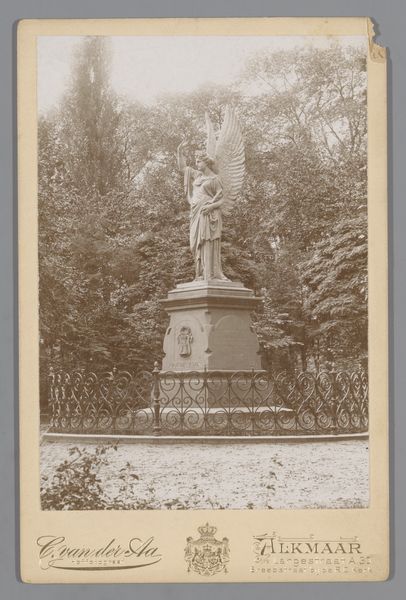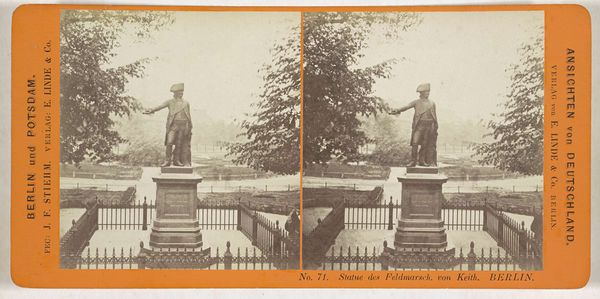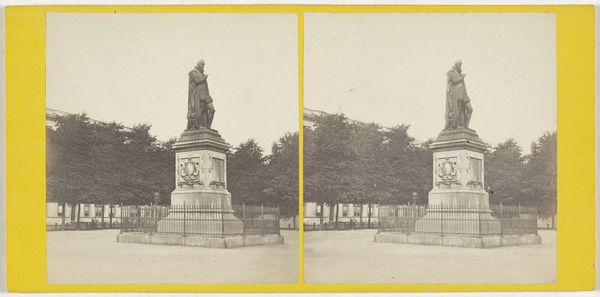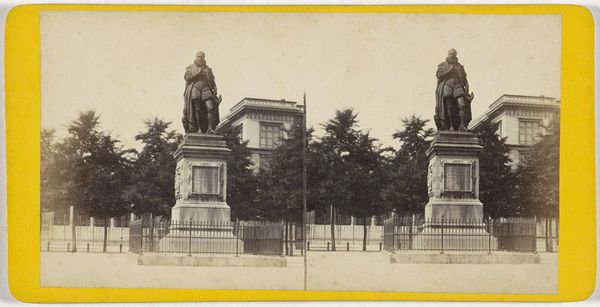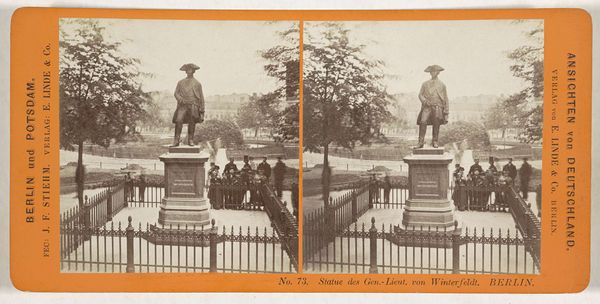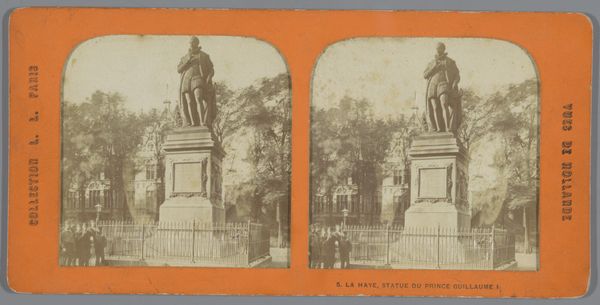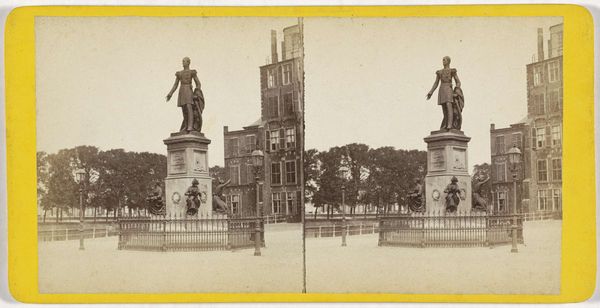
Standbeeld van Friedrich Wilhelm von Brandenburg op het Leipziger Platz, Berlijn 1868 - 1870
0:00
0:00
Dimensions: height 86 mm, width 176 mm
Copyright: Rijks Museum: Open Domain
This stereograph by Johann Friedrich Stiehm captures the statue of Friedrich Wilhelm von Brandenburg on Leipziger Platz in Berlin. Though the image shows the final result, it's worth considering how the original monument was produced. Likely cast in bronze, the sculpture would have begun with a clay model, meticulously worked by the artist or his studio assistants. This model would then be used to create a mold, into which molten bronze was poured, a process demanding technical skill. The bronze itself would be sourced from mines, smelted and alloyed, representing a confluence of industrial processes and natural resources. The statue's imposing presence and the labor-intensive process of its creation speak to the power and resources of the Prussian state, but also to the complex industrial and economic networks that supported such monumental projects. Considering the labor, materials, and context challenges the traditional divide between art, craft, and industry.
Comments
No comments
Be the first to comment and join the conversation on the ultimate creative platform.
